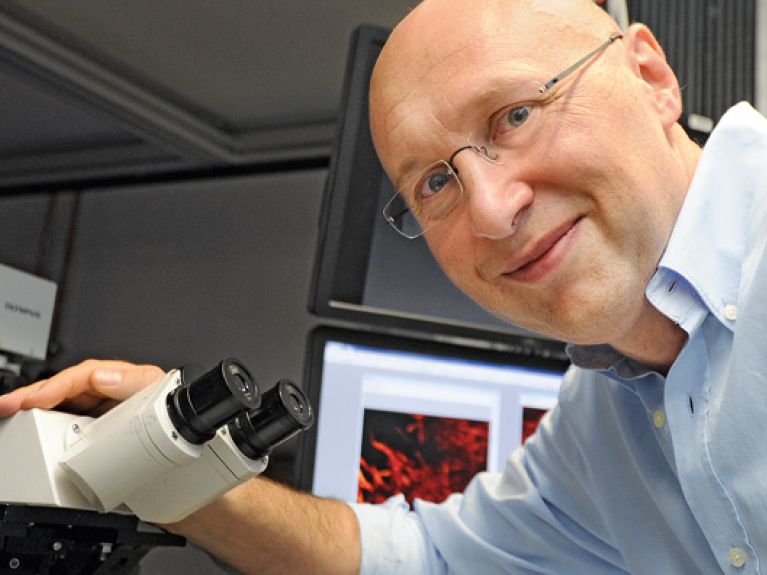“I simply stuck to my idea”
Stefan Hell‘s STED microscope opens up unexpected perspectives.

He remained obstinate: “I simply stuck to my idea, although people found it difficult to believe at first,” said Stefan Hell in an interview shortly after the winners of the 2014 Nobel Prize for Chemistry were announced. Hell has made some fascinating insights into the human organism possible – and successfully overcome barriers that were thought to be impenetrable. Like his two US co-laureates Eric Betzig and William E. Moerner with their single-molecule microscopy, Stefan Hell opened up new perspectives with his STED microscope.
For many years, light microscopy was thought to be subject to the diffraction limit, as explained by the German physicist Ernst Abbe in 1873. Light waves must be diffracted if a microscope is to focus on a point. In the best-case scenario, this results in a “light spot” of 200 nanometres (200 millionths of a millimetre). The STED microscope overcomes this limit with two laser beams: one illuminates the object to be observed, the other blacks out everything that is not in focus. Hell is Director of the Max Planck Institute for Biophysical Chemistry in Göttingen. His invention has given medicine an important tool in the fight against cancer and neurological diseases.

